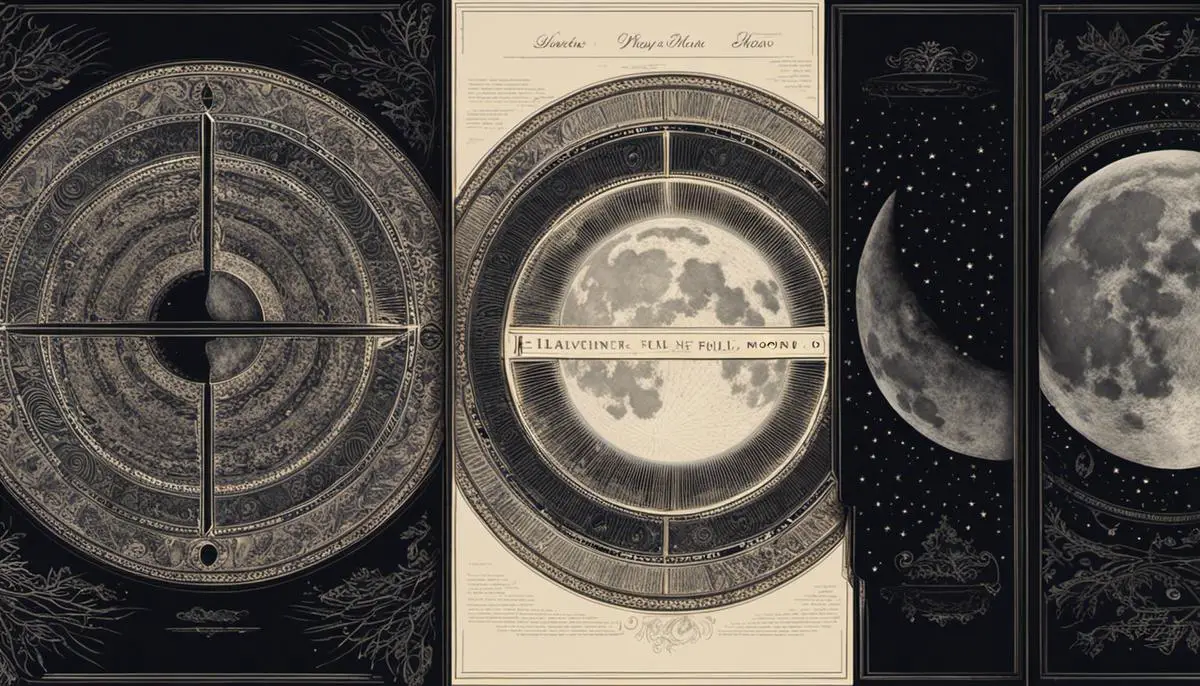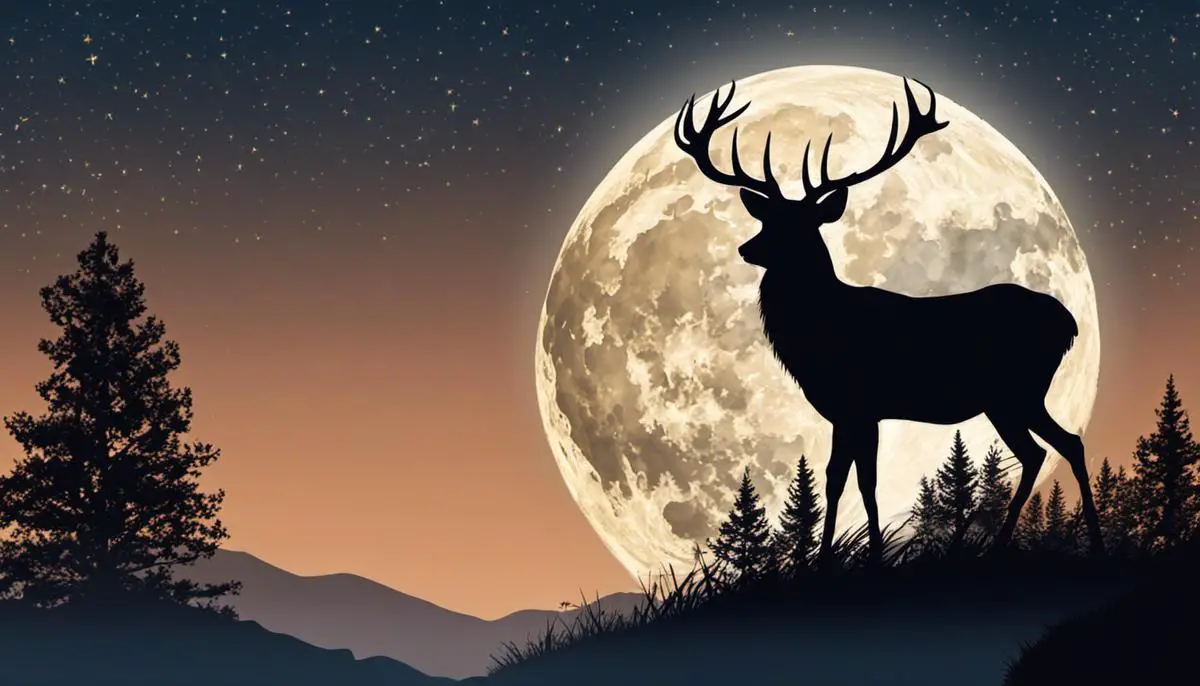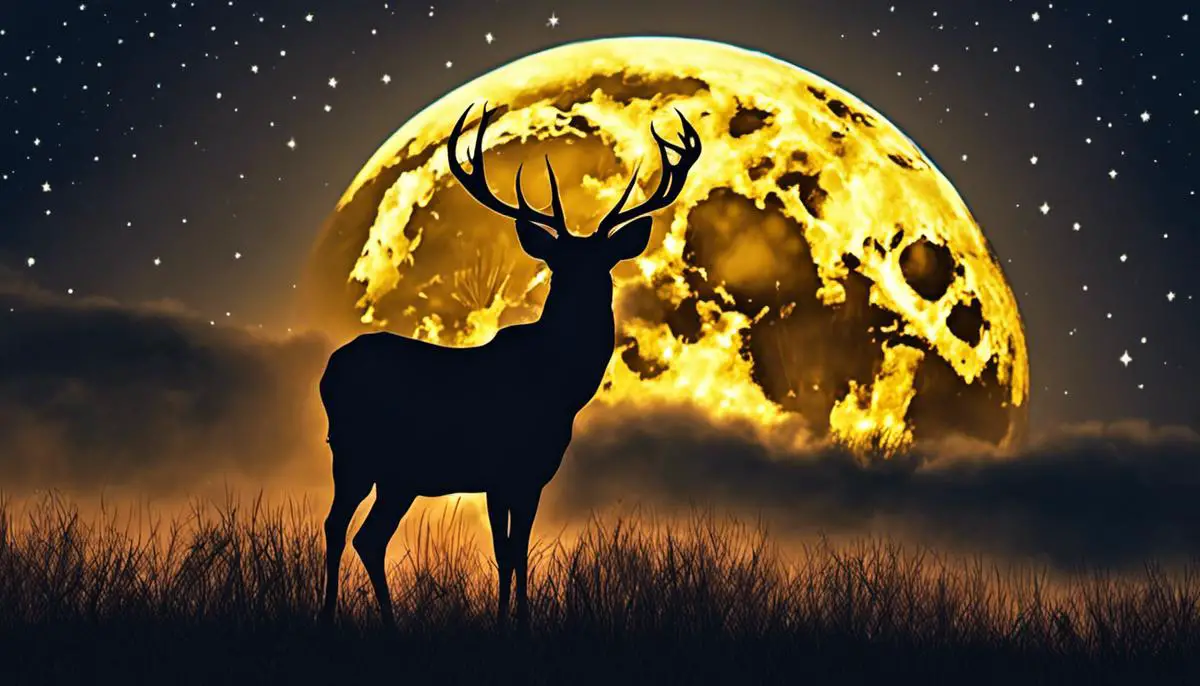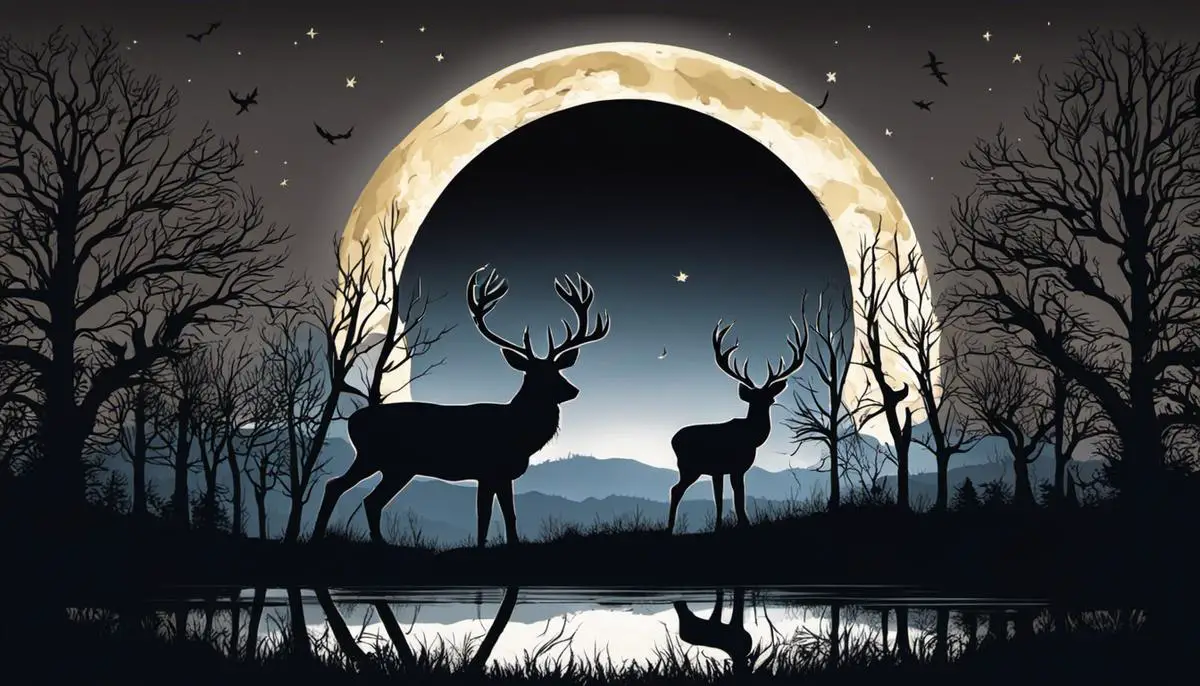Every year, the sky creates a unique spectacle that captures the gaze of observers worldwide, invoking a sense of mystery and inspiring countless tales in folklore – the Full Moon Buck Moon. The occurrence of this phase of the lunar calendar, named so for the time when deer shed their antlers, generates intrigue about the interplay of celestial phenomena and terrestrial life. This phenomenon spirals an array of topics from understanding the significance and the quintessence of the Full Moon Buck Moon, unwinding the enigmatic lunar phases, the relationship between the Full Moon Buck Moon and these phases, and separating folklore and myths from scientific evidence. The journey to comprehend these woven aspects of this majestic spectacle promises to leave us in awe and reverence of nature’s grandeur.
Understanding the Full Moon Buck Moon
What is the Full Moon Buck Moon?
The Full Moon Buck Moon is a name given to the full moon that appears in July. This phenomenon is named after the deer or “bucks” who shed their heavy coats in the heat of the summer and begin to grow new ones. This process mimics a rebirth or renewal, similar to the monthly cycle of the moon’s waxing and waning.
The Significance of the Full Moon Buck Moon
The significance of the Full Moon Buck Moon lies largely in its timing. Occurring in mid-summer, this full moon has been a beacon for centuries that marked a specific phase in yearly cycles, both for wildlife and agricultural activities. For deer, it signals the time for them to shed their antlers, thus earning the name “Buck Moon”. In agricultural societies, it served as a reminder of the high summer and the peak of the growing season.
Full Moon Buck Moon in Folklore
In Native American folklore, different tribes gave names to each full moon to track the passing of time. The Full Moon Buck Moon is also referred to as the Thunder Moon, Hay Moon, or Wort Moon in ancient cultures. The name Thunder Moon is associated with the frequent thunderstorms in July. The term Hay Moon is derived from the haymaking season of June and July, and Wort Moon refers to the time when herbs (wort is an Old English term for herbs or plants) are most potent for harvesting.
Observing the Buck Moon
The Full Moon Buck Moon is observable to the naked eye, depending on the sky’s clarity, and is seen as a full, bright moon. As with all full moons, the Buck Moon rises in the east around sunset and sets in the west around sunrise. It’s at the peak of brightness in the middle of the night. However, cloud cover can affect visibility.
A Closer Look at the Full Moon Buck Moon and Lunar Phases
Observed as a part of the monthly lunar cycle, the Full Moon Buck Moon, along with other full moons, signifies one of the eight key lunar phases. These crucial phases include new moon, waxing crescent, first quarter, waxing gibbous, full moon, waning gibbous, last quarter, and waning crescent. It’s during the full moon phase, such as the Buck Moon, that the moon situates itself on the opposite side of Earth away from the sun, leading to the complete illumination of its face by the sun’s light.

Demystifying Lunar Phases
Diving Deeper into Lunar Phases
When referring to ‘lunar phases’, we’re discussing the Moon’s appearance changes seen from Earth, which happen cyclically. The cause for these changes rises from the Moon’s orbit around the Earth, as well as the unpredictable shifting positions of the Moon, the Earth, and the Sun. Due to the Moon’s revolution around the Earth, the Sun’s light illuminates different sections of it at various times, thereby giving us diverse lunar shapes to observe.
Moon Phases and Earth’s Rotation
The interaction between the Moon’s orbit and Earth’s rotation significantly contributes to the lunar phases’ development. While the Earth rotates on its axis roughly every 24 hours, the Moon completes its orbit around the Earth approximately every 27.3 days, known as a sidereal period. During this time, Earth’s rotation causes the Moon to rise in the east and set in the west each day, albeit not at the same times.
The moon’s orbit is slightly tilted compared to Earth’s rotational axis, which causes the moon’s position in the sky to change moderately each night. Consequently, at different points in the Moon’s orbit, we see distinct amounts of the Moon’s sunlit surface, resulting in different lunar phases.
Historical Significance of Lunar Phases
Looking back through history, the cyclical phases of the Moon have always been of immense significance. Many ancient civilizations relied heavily on the Moon’s phases to develop the first calendars and determine the best times for planting and harvesting crops.
Many cultures also associated different lunar phases with specific myths and deities. Full moons, for example, were often viewed as powerful or mystical occurrences, and even today are frequently associated with folklore and superstition.
Lunar Tides Influence on Earth
The moon exerts influence on Earth in several ways, notably through causing tides. High tide and low tide result from the moon’s gravity pulling Earth’s oceans towards it. As the moon orbits the earth, the location of high and low tides changes, typically resulting in two high and two low tides each day.
Understanding the Full Buck Moon in relation to Lunar Phases
The most visually captivating phase amidst the lunar cycles is undeniably the Full Moon phase. During this phase, the moon positions itself on the same side as the Earth, directly opposite the Sun. This causes its face to be fully illuminated, presenting us with the spectacular sight of the complete moon. An annual event, especially observed in North America, is the Full Buck Moon. This particular full moon, typically spotted in July, is attributed to the time when a buck’s antlers are in full growth. It also serves as a potent reminder of the moon’s impactful presence in our daily lives and its significant historical role.

Correlation between Full Moon Buck Moon and Lunar Phases
The Full Buck Moon’s Significance in the Lunar Calendar
A specific stage in the lunar cycle, the Full Buck Moon generally graces the skies in July. This stage is part of the extensive lunar calendar, characterized by varying fluctuations of the moon’s visibility. The lunar calendar adheres to a 29.5-day lunar cycle, which commences with the new moon phase, distinguished by the moon’s invisibility. Then it transitions through growing or waxing stages arriving at the first quarter, leading up to the full moon, and eventually reducing or waning back into a new moon.
Symbolizing a time when bucks or male deer begin to sprout new antlers, the Full Moon Buck Moon signifies the zenith of the lunar cycle – the Full Moon phase, where the moon is fully visible.
Influence of the Full Moon Buck Moon on Humans
It is widely believed that lunar phases, especially the full moon, have distinctive influences on human behavior and psychology. Anecdotal stories and folklore often claim that the full moon causes erratic behavior or triggers changes in mental health. Although comprehensive scientific support for these claims isn’t available, some studies do suggest that certain aspects of human behavior and health might see slight influences. sleep disruption during the full moon phase is a common observation.
Previously, the full moon was also integral to agricultural practices. It served as a calendar marker for farmers to follow due to the visibility it provided at night. The Full Moon Buck Moon was especially significant as it symbolized the mid-summer period, important for many ancient and traditional farming cultures.
Impact of Full Moon Buck Moon on Animals
In animals, particularly deer, the Full Moon Buck Moon is significant. The term “buck moon” came into popular usage because male deers or bucks start to grow new, larger antlers during this period. This is part of their mating strategy and preparation for the autumn breeding season known as the “rut”. The growth of antlers is driven by day length or photoperiod and hormonal changes in the deer, rather than by the lunar cycle directly.
However, it has been observed that the full moon affects the activity patterns of various animal species, including deer. Specifically, deer are thought to reduce their activity by staying undercover during full moon nights when their silhouettes might be more easily spotted by predators. Conversely, they increase foraging activity during moonless or partially moonlit nights.
The Significance of the Full Moon Buck Moon
In various cultures and farming traditions, the Full Moon Buck Moon serves a pivotal role as a mid-summer marker, presenting no direct impact on other natural events. Certain indigenous societies also associate this Buck Moon with July’s prevalent thunderstorms, earning it the extra name of Thunder Moon.
When viewed from an astronomical lens, the lunar phases play an integral role in the tide changes due to the moon’s gravitational pull. Full moons, in particular, cause “spring tides”, a period with an extreme range of high and low tides. These tidal variations can significantly influence marine life and the ecosystems along the coast.

Debunking Myths about the Full Moon Buck Moon
Demystifying Full Moon Buck Moon Myths
Throughout history, the Full Moon Buck Moon has been at the center of numerous myths, superstitions, and legends across diverse cultures. People have spun tales and hypotheses based on observations and interpretations of these lunar phenomena.
The term Full Buck Moon refers to July’s first full moon. This name comes from Native American tribes who noted that male deer or “bucks” start growing new antlers during this month. Some of these old superstitions suggest the Buck Moon can trigger heightened tension, potential fertility fluctuations, and possibly affect harvests. Certain folklore go to the extent of proposing that it may precipitate madness or event mystical events.
Scientific Reality Versus Legends
Despite these fascinating stories, modern science has debunked many of these myths. Studies have found no evidence of increased tension, reproductivity, agricultural yields, or instances of mental illness coinciding with the Full Buck Moon. The lunar phases primarily affect only oceanic and some freshwater tides due to the moon’s gravitational pull.
As for the Old Farmer’s Almanac which is often used as a reference for the Buck Moon, it’s crucial to understand it was based on folklore and observational trends rather than formal science. Thus, while engaging, much of the information contained is not directly supported by scientific evidence.
The Moon’s Phases and Their True Impacts
The moon’s phases are essentially the varying illuminated portions of the moon as seen from Earth. The cause behind these phases is the relative positions of Earth, our moon, and the sun in our solar system. The primary phases include the new moon, first quarter, full moon, and last quarter.
These lunar phases have real, validated effects on Earth, circumstantial to the moon’s gravitational pull. During full and new moon phases, we experience spring tides (with higher than average tide ranges) due to the alignment of Earth, the moon, and the sun that amplifies the gravitational force. Conversely, during first and last quarter phases, we witness neap tides (with lower than average tide ranges) when the gravitational forces are not in line, thus minimized.
Therefore, while it’s easy to get captivated by age-old superstitious beliefs and myths associated with the Full Moon Buck Moon, it’s necessary to distinguish these lore from scientifically-verifiable facts. Lunar phases do have real impacts, but they are not as dramatic or mystical as many tales would have us believe.

Our understanding of the lunar phases and celestial phenomena like the Full Moon Buck Moon enhances our appreciation of the natural world around us. It creates an avenue for us to critically interpret the folklore and myths and appreciate the combination of beauty and science that is the lunar phase. The moon’s cyclical dance as it waxes and wanes has much more to it than just lighting up the night sky. When we comprehend the nuances of the Full Moon Buck Moon, we realize that it transcends beyond the realm of folklore, painting a picture of the intricate interrelationships of life on Earth and celestial events. A deeper grasp of these subjects opens up new vistas of appreciation towards the marvel of nature, illuminating the wealth of knowledge hidden in the darkness of the night sky.
![]()
